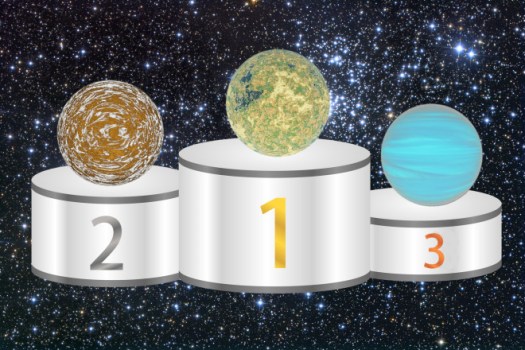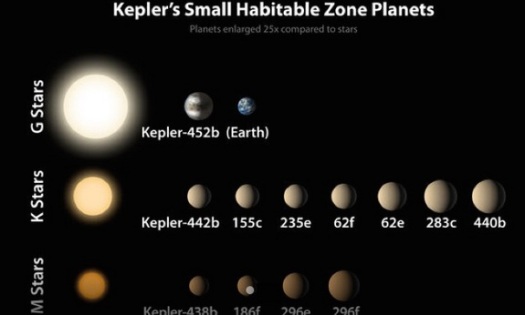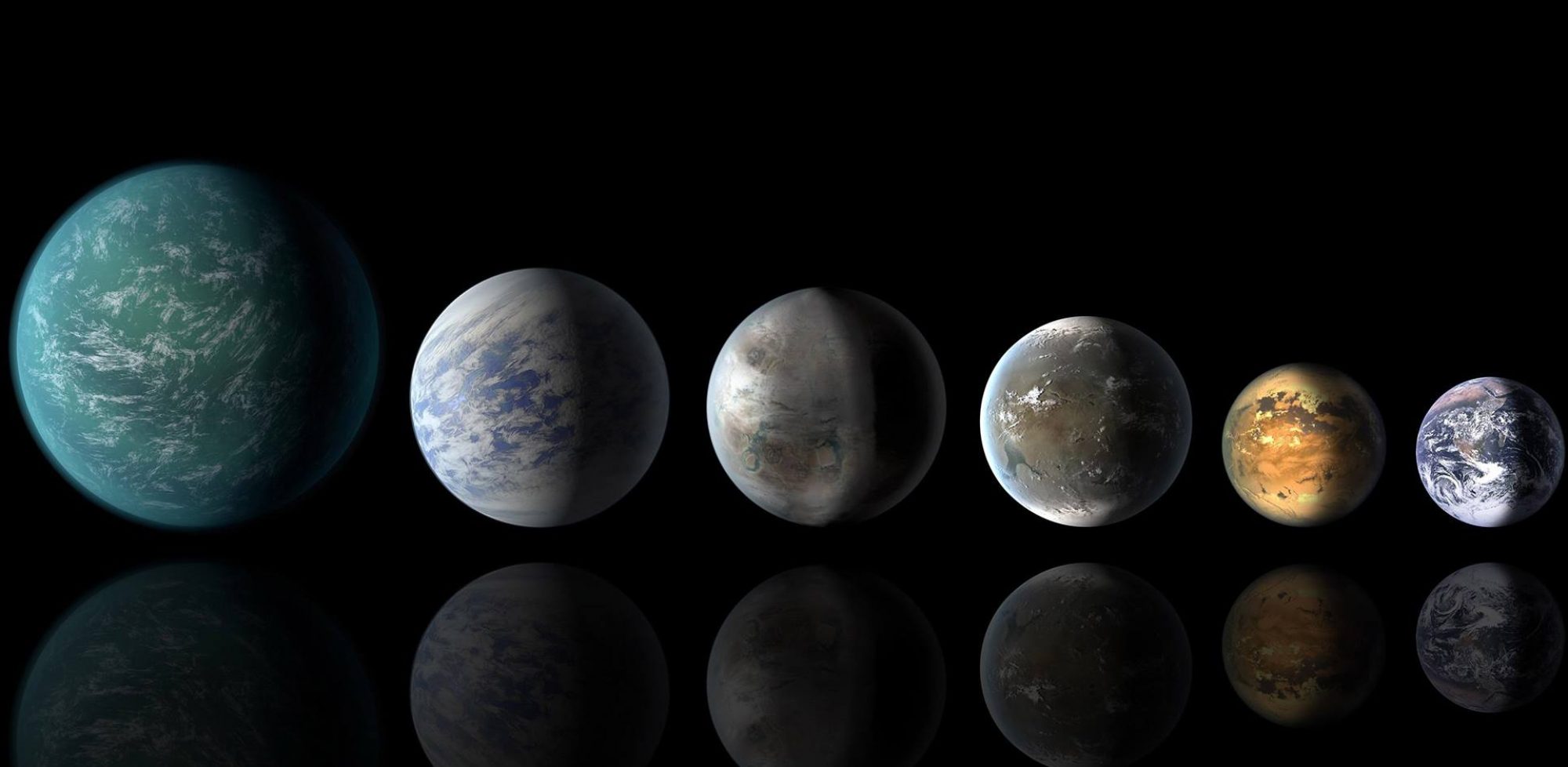
Now that we know that there are billions and billions of planets beyond our solar system, and we even know where thousands of confirmed and candidate planets are located, where should we be looking for those planets that could in theory support extraterrestrial life, and might just possibly support it now?
The first order answer is, of course, the habitable zone — that region around a host star that would allow orbiting planets to have liquid water on the surface at least some of the time.
That assertion is by definition a theoretical one — at this point we have no detection of an exoplanet with liquid water orbiting a distant star — and it is actually a rather long-held view.
For instance, this is what William Whewell, the prominent British natural philosopher-scientist-theologian (and Master of Trinity College at Cambridge) wrote in 1853:

“The Earth is really the domestic hearth of this solar system; adjusted between the hot and fiery haze on one side, the cold and watery vapour on the other. This region is fit to be the seat of habitation; and in this region is placed the largest solid globe of our system; and on this globe, by a series of creative operations…has been established, in succession, plants, and animals, and man…The Earth alone has become a World.”
Whewell wrongly limited his analysis to our solar system, but he was pretty much on target regarding the crude basics of a habitable zone. His was followed over the decades by other related theoretical assessments, including in more modern times Steven Dole for the Rand Corporation in 1964 and NASA’s Michael Hart in 1979. All pretty much based on an Earth-centric view of habitable zones throughout the cosmos.
It was this approach, even in its far more sophisticated modern versions, that got some of the scientists at the University of Washington’s Virtual Planetary Laboratory thinking three years ago about how they might do better. What they wanted to do was to join the theory of the habitable (or more colloquially, the “Goldilocks zone”) with actual data now coming in from measurements of transiting exoplanets.
Although the measurements remain pretty limited, the group was convinced that the process could come up with the beginnings of a “Habitability Index” that would rate — based on evidence-based calculations and models — which exoplanets had the best chance of being able to support life.
“We certainly are constrained by the observations being made, but we do have some important physical measurements to work with,” said Rory Barnes, a astrophysical theorist with the VPL. “And what we’ve done is to connect the possibility of life with the fundamental observables we do have….This really hasn’t been done before.”

The result was a detailed paper in the Astrophysical Journal that showed observations and modeling that can be harnessed together to come up with a list of the 10 exo-objects most likely to support life. I specifically didn’t write “exoplanets” because nine of the ten remain “candidate” planets detected by the Kepler Space Telescope as transiting objects that block out a small bit of light from the host star. But they have not yet been confirmed through other detection techniques.
And why do the hard work of teasing out the potentially most habitable planets (objects) from the many thousands of others identified? Clearly, it’s not because the data will point to some planet/objects that have a very good chance of being habitable. The information available just won’t allow for that.
Rather, the next-generation James Webb Space Telescope is scheduled to launch in 2018, and it will be able to measure the components of exoplanets and their atmospheres in a whole new way.But access to a telescope like the JWST is costly and the observing and analyzing is and time-consuming. And so the Virtual Planetary Laboratory’s index is designed to help fellow astronomers identify which worlds might have the best chance of hosting life, and so are worthy of all the necessary time and money.
Is the Habitability Index that much more useful than the more traditional habitable zone assessments based on a planet’s proximity to a particular star of a particular strength? And is it more predictive than some related assessments such as the Earth Similarity Index, created by Abel Mendez at the University of Puerto Rico at Arecibo.
Because it takes into account so much more information, it certainly seems likely that it is more predictive, especially as new and better information is added to the system. While the traditional habitable zone points to a locations, the Habitability Index identifies distinctions within a habitable zone that would make an exoplanet more or less likely to support life.
rory

The new index is more nuanced, producing a continuum of values that astronomers can punch into a Virtual Planetary Laboratory Web form to arrive at the single-number habitability index.
In creating the index, the researchers factored in estimates of a planet’s rockiness, rocky planets being the more Earth-like. They also accounted for a phenomenon called “eccentricity-albedo degeneracy,” which comments on a sort of balancing act between the a planet’s albedo — the energy reflected back to space from its surface — and the circularity of its orbit, which affects how much energy it receives from its host star.
The two counteract each other. The higher a planet’s albedo, the more light and energy are reflected off to space, leaving less at the surface to warm the world and aid possible life. But the more non-circular or eccentric a planet’s orbit, the more intense is the energy it gets when passing close to its star in its elliptic journey.
A life-friendly energy equilibrium for a planet near the inner edge of the habitable zone — in danger of being too hot for life — Barnes said, would be a higher albedo, to cool the world by reflecting some of that heat into space. Conversely, a planet near the cool outer edge of the habitable zone would perhaps need a higher level of orbital eccentricity to provide the energy needed for life.
These are the kinds of measurements being analyzed as well by the NASA’s Kepler Habitable Zone Working Group, a collection of scientists within the Kepler team with the task of identifying some of the most promising targets for future observation.
Stephen Kane is leading the group, and expects to come out with an assessment this summer.
Barnes, Meadows and Evans ranked in this way planets so far found by the Kepler Space Telescope, in its original mission as well as its “K2” follow-up mission. They found that the best candidates for habitability and life are those planets that get about 60 percent to 90 percent of the solar radiation that the Earth receives from the sun, which is in keeping with current thinking about a star’s habitable zone.
The research is part of the ongoing work of the Virtual Planetary Laboratory to study faraway planets in the ongoing search for life, and was funded by the NASA Astrobiology Institute.
“This innovative step allows us to move beyond the two-dimensional habitable zone concept to generate a flexible framework for prioritization that can include multiple observable characteristics and factors that affect planetary habitability,” said Meadows.
“The power of the habitability index will grow as we learn more about exoplanets from both observations and theory.”
